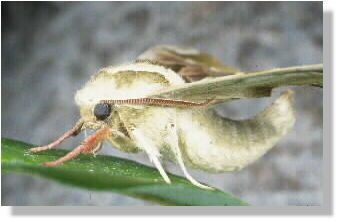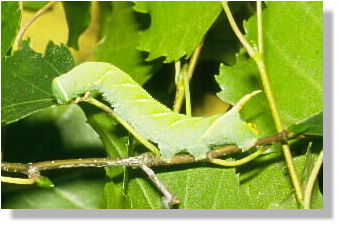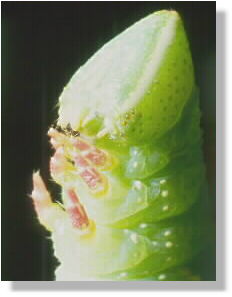| The oblique streaks on its
back imitate tributary veins of a leaf running towards the central vein, which is
represented by the wavy shape of the caterpillar's back. It finishes by the
"tail", as does the central vein of a leaf by the stalk. The
caterpillar by its pattern displays the essential parts of a leaf,
blending imperceptibly into its surroundings. Its pattern is the perfect
camouflage for a life in the tops of trees.
In the picture on the left there are the
details of the
caterpillar's front. At
the bottom of the head the mouth parts are visible. Further down, there
are the three pairs of main legs that already in this larval state show
a distinguished segmentation.
At the left base of the
head, four minute eyes can be recognized. They are very simple eyes that
merely allow to distinguish light and dark. In contrast to a grown-up
moth, a caterpillar has no good eye-sight, but gets its orientation
mainly by smell and feeling. |


